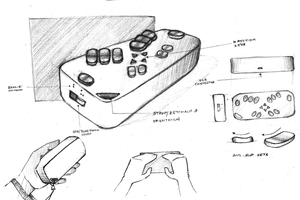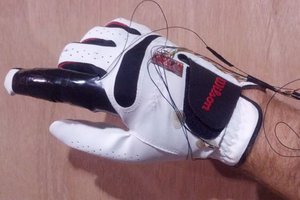See the YouTube video link on this page.
Commercial standing desks and risers cost $$. I already had a desk at my office, so decided on a riser only. DIY desk/riser projects are a dime a dozen, but I wanted one with the following characteristics:
- Solid, robust, should last forever
- Easy and quick to switch between sitting and standing
- Only one sitting and one standing position, not "in between"
- Acceptable aesthetics (i.e. doesn't look like a pile of firewood)
- Occupy as little desk real estate as possible, especially in width
- Works with my Rollermouse (mouse substitute from ContourDesign)
Any adjustable desk/riser has to balance its load with some mechanism, otherwise it will be very difficult for the user to handle, or simply won't stay up. Electric desks use the motor, with some locking mechanism. My manually-operated riser employs a lever with gas strut as counterweight.
To simplify the design - and for robustness - I chose to separate the monitor and input (keyboard, mouse) platforms. The former goes up & down on drawer slides, with lever/gas strut counterweight; the latter in & out on more slides, plus bottom rollers for downward load carrying capacity.
The lever/strut combination exerts an upwards force that balances, almost exactly, the weight of the monitor + platform (+- 5kg). This allows the monitor to sit at the bottom position with no additional latch, and allows a fairly smooth up/down adjustment. It is locked in the top position with latches.
The keyboard tray locks in the "out" position courtesy of a sliding-door lock.
 Cornel Masson
Cornel Masson

 Vijay
Vijay
 haydn jones
haydn jones
 Tinfoil_Haberdashery
Tinfoil_Haberdashery
 Eric Jacob
Eric Jacob
Will post soon. Down after small op at the mo.